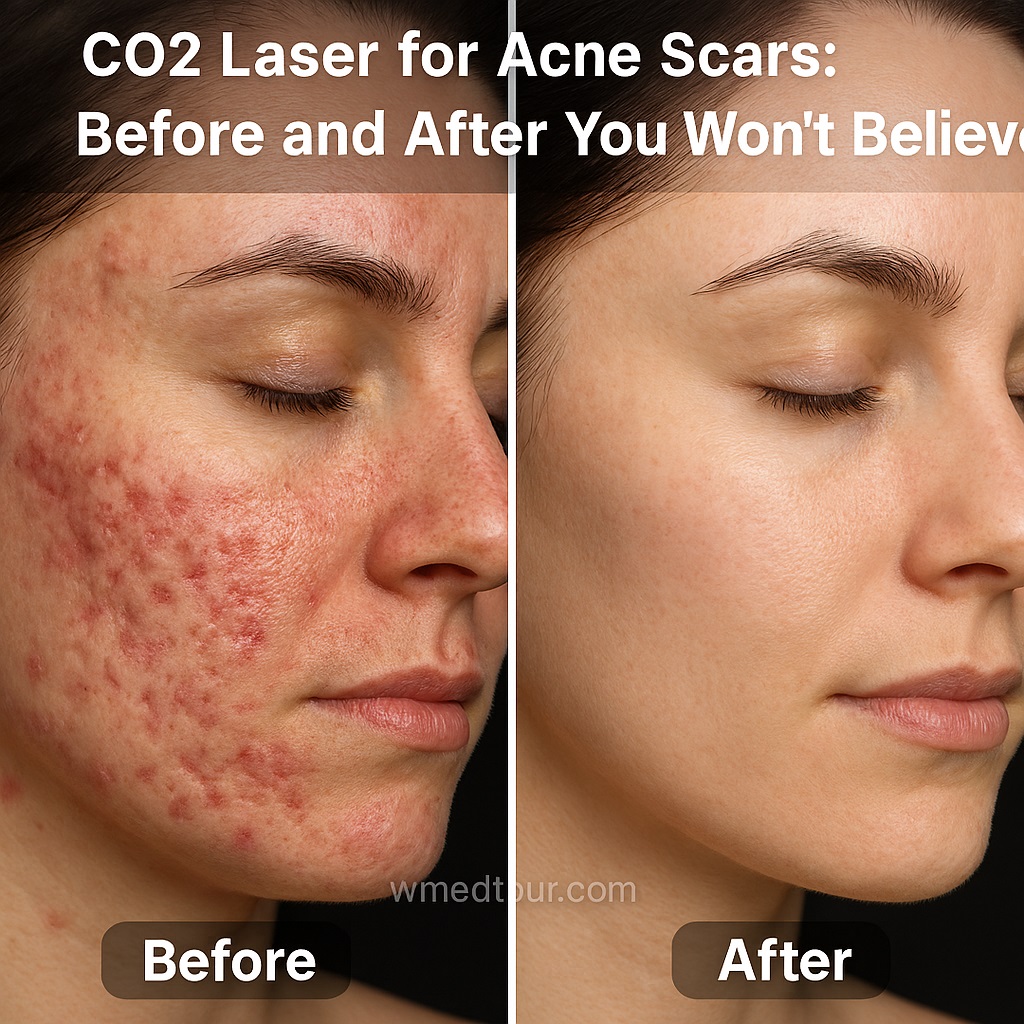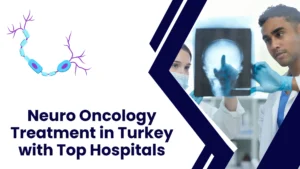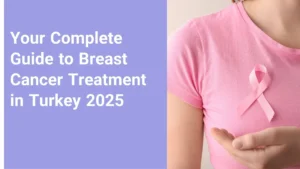If you’re reading this, you probably know the frustration of looking in the mirror and seeing the texture left behind by acne. It’s more than just a cosmetic concern; it affects confidence and how you feel about yourself every single day. The good news is that you don’t have to live with them. Advances in medical aesthetics have made it possible to significantly reduce, and in many cases, eliminate the appearance of even the most stubborn acne scars. Among the many options available, one stands out as the gold standard: the CO2 laser for acne scars.
Laser resurfacing has been a game-changer for many years. It is a highly effective treatment because it addresses the core issue of scar tissue at a deeper level than topical creams or at-home solutions ever could. By delivering focused energy to the skin, lasers stimulate the body’s natural healing processes and promote the production of new, healthy collagen. This is the very foundation of skin rejuvenation and the key to smoothing out those frustrating indentations.
Understanding the Power of CO2 Lasers
The term “CO2 laser” refers to a specific type of laser that uses a carbon dioxide medium. It operates at a wavelength that is strongly absorbed by the water content in your skin cells. This powerful absorption allows for incredibly precise vaporization of the outermost, damaged layers of skin. By doing so, it removes the scarred tissue and simultaneously heats the underlying dermis. This controlled thermal injury is what triggers the massive collagen remodeling response that leads to smoother, firmer skin. This dual action is a major reason why the CO2 laser for acne scars is so effective.
You’ll often hear about two main types of CO2 laser treatments: fully ablative and fractional. Fully ablative treatments remove the entire top layer of skin in the treated area, offering the most dramatic results from a single session. However, this comes with a longer, more intensive recovery period. Fractional lasers, on the other hand, are the more modern and widely used approach. They create thousands of microscopic columns of thermal injury, leaving healthy, untreated skin in between. These “islands” of untouched skin allow for much faster healing and a more comfortable recovery. It’s an excellent balance of significant results and manageable downtime.
The Patient Journey: A Path to Clearer Skin
Let’s walk through a typical patient journey. Consider a hypothetical case study of a patient named Sarah. Sarah, like many others, struggled with cystic acne in her teens and twenties, leaving her with a combination of boxcar and rolling scars on her cheeks and temples. She felt self-conscious and tired of using makeup to conceal the uneven texture. After extensive research, she decided to explore the CO2 laser for acne scars and booked a consultation with a qualified dermatologist.
During her consultation, the dermatologist assessed her skin type, scar depth, and overall health. They determined that she was a good candidate for a fractional CO2 laser treatment. The doctor explained that she would need a series of sessions for optimal results. On the day of her first treatment, a topical numbing cream was applied to her face to minimize discomfort. During the procedure, a stream of cold air was also used to keep her skin cool. The treatment itself took about an hour.
Immediately after the procedure, Sarah’s skin felt warm, as if she had a bad sunburn. It was red and slightly swollen. Over the next few days, her skin began to form tiny crusts and peel, a normal and expected part of the healing process. Following her doctor’s strict post-care instructions—including keeping her skin clean, moisturized, and out of the sun—she was back to most of her normal activities within a week. While her skin was still pink, the new, smoother texture was already noticeable. Sarah continued her regimen and after a few months and a second treatment, she saw a truly dramatic improvement.
Pros and Cons: CO2 Laser vs. Other Treatments
While the CO2 laser for acne scars is highly effective, it’s not the only treatment available. It is important to understand how it compares to other options to make the best choice for your skin. Here’s a quick breakdown of pros and cons.
Fractional CO2 Laser
Pros
- Exceptional effectiveness for deep acne scars (boxcar, rolling).
- Stimulates massive collagen production for long-lasting results.
- Also addresses fine lines, wrinkles, and sun damage.
- Considered the gold standard by many dermatologists.
Cons
- Longer downtime compared to non-ablative lasers (typically 5-7 days).
- Higher risk of post-inflammatory hyperpigmentation (PIH) in darker skin tones.
- Can be uncomfortable; requires topical anesthesia.
Microneedling with Radiofrequency (RF)
Pros
- Safer for all skin types, including darker tones, with a lower risk of PIH.
- Less downtime (usually 1-3 days of redness).
- Stimulates collagen through controlled micro-injuries and heat.
Cons
- Less effective for very deep or severe scars compared to a CO2 laser for acne scars.
- Requires multiple sessions to achieve noticeable results.
Chemical Peels
Pros
- Affordable and accessible option.
- Good for treating surface-level pigmentation and mild textural issues.
- Can be combined with other treatments.
Cons
- Not effective for deeper, atrophic scars.
- Results are temporary and require ongoing treatments.
- Requires proper post-care to avoid complications.
Comparison Table: Finding Your Perfect Match
To help you visualize the differences, here is a quick comparison of the most common treatments for acne scars. This table can serve as a helpful starting point as you discuss your options with a professional.
| Feature | CO2 Laser | Microneedling with RF | Chemical Peels |
|---|---|---|---|
| Ideal Scar Type | Deep atrophic (boxcar, rolling, ice pick) | Mild to moderate atrophic | Pigmentation & mild texture issues |
| Downtime | 5-7+ days (fractional), longer (ablative) | 1-3 days | 1-7 days depending on peel depth |
| Number of Sessions | 1-3 for significant results | 3-6+ for best results | Multiple, ongoing sessions |
| Collagen Stimulation | Very High | High | Low to Moderate |
| Best for Skin Type | Fair to medium skin tones | All skin types, especially darker tones | All skin types, but caution with dark skin |
| Cost per Session | $$$ | $$ | $ |
Who is This For?
The CO2 laser for acne scars is a powerful tool, but it’s not a one-size-fits-all solution. Knowing if you are an ideal candidate is the first step toward a successful outcome. Generally, it works best for people with fair to medium skin tones (Fitzpatrick types I-IV). Individuals with darker skin tones (Fitzpatrick types V-VI) have a higher risk of post-inflammatory hyperpigmentation (PIH), which is a temporary darkening of the skin. However, advancements in laser technology have made treatments safer for all skin types.
The ideal candidate should also be in good overall health and have realistic expectations. The procedure can offer dramatic improvements, but it won’t give you “perfect” skin. It’s about achieving significant correction and a smoother texture. You also need to be committed to the post-care routine. The success of the treatment depends heavily on how well you protect and care for your healing skin.
A crucial factor in your decision is your budget. A CO2 laser for acne scars is a significant investment. When considering your options, look at the full cost of the treatment plan, which may include multiple sessions and post-care products. Comparing the cost-effectiveness and long-term value of a single, powerful treatment versus many less-intense sessions is vital.
The FAQ Section: Answering Your Top Questions
We know you have a lot of questions about this life-changing procedure. Here are the most important and most-asked questions, with complete answers to help you feel confident about your journey.
1. How does the CO2 laser for acne scars work?
It uses a specialized laser that delivers concentrated light energy to the skin. This energy vaporizes the damaged outer layers and heats the underlying tissue, which stimulates a powerful healing response and the production of new collagen.
2. Is the procedure painful?
Most patients report feeling a stinging or burning sensation similar to a rubber band snap. However, a topical numbing cream is applied beforehand to minimize discomfort. Some clinics also use a cool-air device to help.
3. What is the downtime after a CO2 laser treatment?
For a fractional treatment, the initial downtime is typically 5 to 7 days. Your skin will be red, swollen, and may have tiny crusts or scabs. The redness gradually fades over several weeks to months.
4. When will I see results?
You will notice initial improvements in texture and tone within 1-2 weeks as the old skin peels away. The most dramatic results will become visible over the next 3 to 6 months as new collagen is formed and matures.
5. How many sessions will I need?
The number of sessions depends on the severity of your scars and your personal goals. For most patients, 1 to 3 sessions are sufficient for a significant improvement. Deeper scars may require more. Book a consultation for an exact plan.
6. Are the results permanent?
The collagen stimulated by the laser is permanent. While the natural aging process and sun exposure will continue, the improvement to the scar tissue is long-lasting. Proper sun protection is key to maintaining results.
7. Can CO2 lasers treat all types of scars?
CO2 lasers are most effective for atrophic scars, which are indented scars like boxcar, rolling, and some ice pick scars. They are not typically used for hypertrophic (raised) or keloid scars.
8. What are the common side effects?
Common side effects include redness, swelling, itching, and peeling. These are normal parts of the healing process. Less common side effects can include temporary changes in skin pigmentation.
9. Is it safe for darker skin tones?
Traditional CO2 lasers have a higher risk of PIH for darker skin tones. However, fractional technology and lower-energy settings can make it a safer option. It is crucial to consult a specialist with extensive experience treating darker skin. (learn more about our experts).
10. How do I prepare for a CO2 laser treatment?
Avoid sun exposure for several weeks before your appointment. You may need to stop using certain topical medications or products, such as retinoids, and take an antiviral medication if you have a history of cold sores.
11. What is the difference between CO2 and Erbium lasers?
CO2 lasers penetrate deeper than Erbium lasers. While both are ablative, Erbium lasers have a shorter recovery period and are often used for superficial lines and wrinkles, while CO2 lasers are better for deep-set scars and more significant resurfacing.
12. Can I use makeup after the treatment?
You should not apply makeup to the treated area until the skin has completely healed and peeled, which is typically 7 to 10 days post-treatment. Using makeup too early can increase the risk of infection.
13. Is a CO2 laser for acne scars painful?
This is a common question. While discomfort varies, the sensation is often described as a prickly or tingling feeling during the procedure. Numbing cream and cooling devices are essential for patient comfort.
14. What are the signs of a good clinic?
A reputable clinic will have a board-certified dermatologist or plastic surgeon with extensive experience in laser treatments, offer a thorough consultation, and show you before-and-after photos of their patients.
15. How much does a session cost?
The cost varies widely based on the location, the clinic’s reputation, the size of the treatment area, and the type of laser used. A full treatment plan with multiple sessions can range from several hundred to thousands of dollars.
16. Can I combine CO2 laser with other treatments?
Yes, many patients have a combination treatment plan. Fillers can be used to treat specific deep scars, while a CO2 laser for acne scars can improve overall skin texture. Your doctor will create a personalized plan. (learn about our combination therapies)
17. What are the benefits beyond scar reduction?
In addition to scar treatment, CO2 laser resurfacing also helps reduce fine lines, shrink pore size, improve overall skin tone and texture, and fade sun damage and age spots.
18. What should I avoid after the procedure?
Avoid direct sun exposure, aggressive scrubbing, and active skincare ingredients like retinoids and glycolic acid until your doctor gives the go-ahead. Do not pick at the peeling skin or scabs.
19. How long is the recovery?
The full recovery process takes weeks to months. While the initial healing of the top layer of skin happens in about 7-10 days, your skin will remain pink and sensitive as it continues to produce collagen.
20. Is it worth the investment?
For many patients, the answer is a resounding yes. The significant and lasting improvement in their skin texture and appearance can have a profound impact on their confidence and quality of life. (read our patient testimonials)
Final Thoughts: Your Next Step
The journey to smoother, healthier skin is a personal one, and the decisions you make along the way are incredibly important. The CO2 laser for acne scars has shown time and again to be a truly transformative treatment. It’s a powerful option for those who are ready to make a significant change and invest in their confidence.
Our mission is to connect you with the best dermatologists and clinics to ensure you get the results you deserve. By choosing an experienced professional, you can minimize risks and maximize the incredible benefits of this procedure.
Schedule Your Consultation with wmedtour.com for the Best Results




